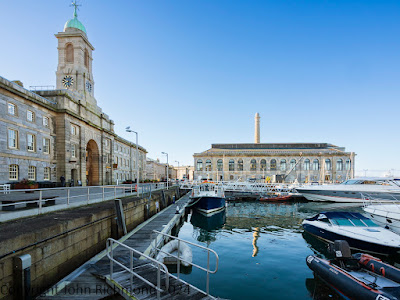Capturing insect behaviour - some 2023 favourites
It's always enjoyable capturing insects actually doing something rather concentrating on static shots. After all, they do have a good range of behaviours. Feeding, flight, mating, egg laying and being preyed upon are all scenarios that give a more rounded picture of the lives of insects.
I've been fortunate enough to capture a few interesting shots in 2023 that illustrate this range of behaviours. Let's start with feeding:
Capturing nectar or pollen feeding insects is easy. Set up your stall by a suitable food plant and wait for the insects to arrive. I've got hundreds of shots like that. But it was nice to capture the one above, with a honeybee, Apis mellifera and the UK's largest hoverfly, Volucella zoonaria feeding side by side on the flowers of a planted patch of snowberry, Symphoricarpos albus. The hard part was getting both insects in the same plane of focus.
Of course to get to their nectar or pollen providing plants most insects have to fly. Flight shots aren't easy. Insects move erratically and are often quite fast. But at least hoverflies hover, making things a little easier. As with this shot of the marmalade hoverfly, Episyrphus balteatus, hovering in fron of Agapanthus flowers in my garden.
Feeding carries risks. Predators are out there, sometimes in disguise, as with this shot of a little sweat bee that's come to feed but, has instead, been captured by a crab spider, Misumena vatia, camouflaged to hide among the flowers of yarrow.
Feeding isn't always the reason for landing on a flower head, as these two silver washed fritillaries,
Argynnis paphia, demonstrate. One of Britain's largest butterflies, it's quite common in the Plymouth area. This was photographed at The Garden House. The female is on the left of the shot. I didn't need a macro lens for this, the 150mm end of the 40-150mm f2.8 Pro being quite sufficient to give me a nice close up.
The next shot, of two bluebottles mating, did need the 60mm macro. It was cold outside, but using natural light, ISO 800 and a tripod I was able to manouver close enough to do a focus stack on the rather chilly pair. A couple of degrees warmer and their movements would have been rather too vigorous!
After mating egg laying tends to follow. And where better to lay eggs than amongst a food supply that the larvae can eat. This is the UK hoverfly
Syrphus ribesii egg laying among rose aphids on one of Maria's roses. I don't use chemical controls for aphids so It's good to see their natural predators getting on with the job.
Hopefully 2024 will bring many more opportunities to capture different aspects of insect behaviour. If so you'll see them here.

















































